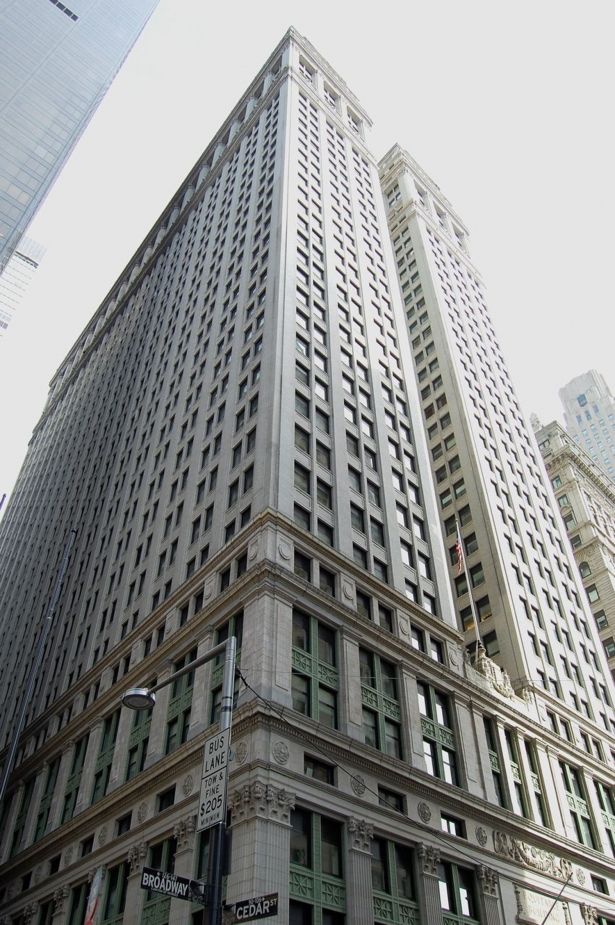
Housing Starts: Fungibility of Air | Bronx Landmark to be Demolished | New Speaker Elected

(credit: The Nation)
- The fungibility of air. The Furman Center at New York University has done what seems to be the only substantial research on the net potential effects of the rezoning. In several reports, it suggests that the final result is a substantial gain in the city’s buildable volume, which, of course, was the primary motivation of the policy-part of the administration’s efforts to reconfigure the city to house the additional million inhabitants it believes will arrive over the next decades.
- Bronx landmark, under City’s care, is on brink of demolition. The building in question is the former Public School 31, 425 Grand Concourse, at East 144th Street. It was completed in 1899, designated a landmark in 1986 and closed in 1997 when there were early signs of the structural deterioration that now seems poised to engulf the five-story structure - if it isn’t razed first. The hearing concerned an application from the Department of Citywide Services, which has had charge of the building for two years, to demolish it.
- Mayoral ally elected speaker, furthering city’s liberal shift. The city’s corporate and real-estate classes, accustomed to a place of influence under previous administrations, were unable to salvage the bid of their preferred candidate, Daniel R. Garodnick, an establishment Manhattan Democrat, who found himself outmaneuvered by labor and grass-roots groups eager to reassert their strength in local government.
- Affordable housing REIT racks up capital. A New York City real estate investment trust specializing in affordable housing recently raised $44.5 million in capital, the organization announced Tuesday, which may help fund future projects in the five boroughs. The Community Development Trust is a private firm focused on preserving affordable units around the country through equity and debt investments. Last spring, the Community Development Trust acquired a 360-unit former Mitchell Lama property in Coney Island and is currently converting it to a rent-stabilized complex with partner Proto Property Services.
- For some tenants, only thing heating up is a temper. On Tuesday the whole city seemed choked in arctic suffering, as the morning low temperature of 4 degrees shattered a century-old record for the date. More than a quarter of New York City public school students stayed home, up from less than 10 percent the day before. The cold posed some unique challenges to firefighters: ‘A lot of the time, the hydrant freezes because it doesn’t drain properly,’ said Jim Long, a Fire Department spokesman. The temperature is expected to climb through the week, to 22 degrees on Wednesday and 51 on Saturday. For thousands of New Yorkers, that is also the best hope for any relief inside their apartments.
- Finally, a market-driven solution to housing homeless families. Utah policymakers got serious about the issue in 2005 and instituted a Housing First initiative that has reduced homelessness statewide by 78 percent thus far. The state conducted a study and concluded it is less expensive to simply give apartments to homeless families. Utah expects to completely eradicate chronic homelessness by the end of this year. Although a number of cities across America have employed varying degrees of the Housing First initiative, only Utah has instituted it statewide. The idea is so popular other states are cozying up to it and it’s even being promoted in Europe. But An Oregon entrepreneur believes he may have the perfect complimentary platform to the Housing First initiative.
- 8 Reasons why the rent is too damn high. A report released last month by the Joint Center for Housing Studies at Harvard found that in an environment of increasing rent and home prices, low- and middle-income Americans were seeing a larger portion of their take-home pay going to cover the cost of rent, making their dreams of homeownership seem like a mirage. Many commentators used the findings to highlight the need for relief and to offer explanations for the increasing cost of housing in American metro areas.
- Be our guest: Mayor de Blasio must get developers to build acceptable amounts of affordable housing. In 1986, New York made a huge commitment to an intractable problem of the 80s - our falling-apart neighborhoods. Then-Mayor Koch made an unprecedented investment of city capital and also managed to get investors to the table to restore our dilapidated and burned-out buildings. This approach successfully rebuilt dozens of our neighborhoods. But in 2014 most neighborhoods are struggling against a different challenge - gentrification, and the speculative development that comes with it. Investors are flocking to the city, not running away from it. It’s a lack of affordability, not lack of investment, that is our seemingly intractable problem.
- New York State floats a tax credit for renters. Last month, a high-profile panel in the state of New York issued a set of recommendations for reining in the state’s high property and business taxes. The group, led by former Governor George Pataki, identified some $2 billion worth of proposed tax cuts, half of it earmarked for property-tax relief for homeowners in suburban New York City and more rural upstate New York. The plan offered virtually nothing to New York City itself.
- Displacement of the poor: Bloomberg’s legacy. Josiah Madar, researcher at the Furman Center for Urban Policy of New York University (NYU), explains that the outgoing administration saw an opportunity to create much-needed housing.‘There are not enough housing units for the great demand in our city,’ Madar said.‘The Bloomberg administration tried to complement the market through a subsidy policy.


